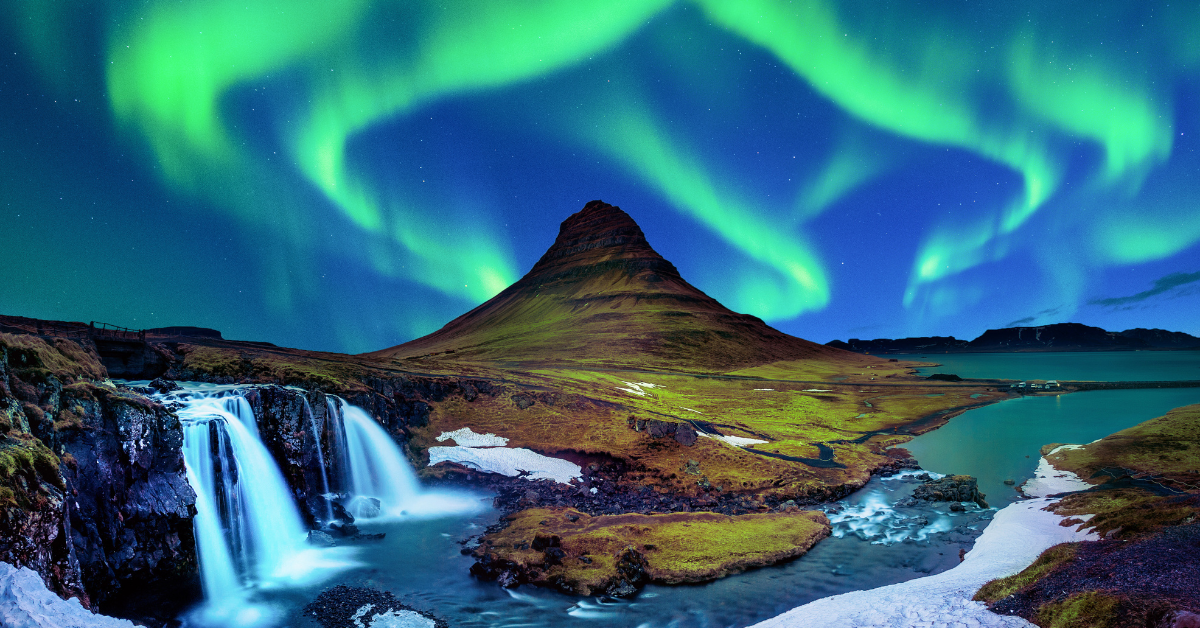Iceland is a country where glaciers and volcanoes coexist, creating landscapes unlike anywhere else in the world. In Japanese, it is often written as “氷島” (Ice Island) or “氷州” (Ice State), reflecting the deep-rooted perception of it as a “land of ice”. This article explores not only the origins of these kanji notations but also how Japanese people view Iceland’s nature, culture, and sports.
Kanji Representations of Iceland
The most representative kanji notations for Iceland are “氷島” and “氷州”. These reflect the meaning of the English word Iceland, evoking a land covered with ice. In addition, from the Meiji period onward, there was a practice of phonetic transcription of foreign place names, which led to the use of “愛斯蘭”.
| Notation | Meaning | Usage |
|---|---|---|
| 氷島 | Literally “an island of ice” | Used in historical writings and literature |
| 氷州 | Suggests a vast land covered in ice | Used in geography and maps |
| 愛斯蘭 | Phonetic transcription of “Iceland” | Appeared in old maps and references to foreign lands |
These variations are not just translations but reflect how Japanese people attempted to understand foreign cultures.
Japanese Perceptions of Nature in Iceland
For Japanese people, Iceland is first and foremost “the land of ice and volcanoes”. The aurora, glaciers, and geysers are perceived as extraordinary natural phenomena.
The aurora borealis is especially popular, often described as “a once-in-a-lifetime view”, while glacier hiking, volcanic tours, and bathing in the Blue Lagoon hot spring are staples for Japanese tourists.
| Natural Experience | Why Japanese People Value It |
|---|---|
| Aurora | Mystical, otherworldly, a dream to see once in life |
| Glacier Hiking | Direct contact with overwhelming nature |
| Blue Lagoon | Resonates with Japan’s hot spring culture |
| Volcano Tours | Evokes familiarity through comparison with Japanese volcanoes |
These experiences define Iceland as a special travel destination for Japanese visitors.
Cultural and Historical Impressions
Iceland also commands strong attention in the cultural realm. The Icelandic Sagas preserve medieval stories of the Norse world and have influenced Japanese literature and fantasy works. The country is also known for producing globally recognized musicians, earning popularity among young Japanese fans.
In addition, Iceland is regarded as a pioneer of gender equality, and its achievements in education and welfare are highly praised in Japan.
| Field | Feature | Impression in Japan |
|---|---|---|
| Literature | Icelandic sagas are world-renowned | Seen as a source of Norse mythology |
| Music | Artists with unique styles have global fame | Loved by fans of fantasy and subculture |
| Social System | Strong gender equality and advanced education | Introduced as a progressive small nation |
Iceland Through Sports
In recent years, the national soccer team’s breakthrough has greatly shaped Iceland’s image in Japan. At EURO 2016, Iceland defeated powerhouse England, which was widely reported in Japanese media. The fact that a country with a population of just over 300,000 could compete on the world stage reinforced the image of a “small but tenacious nation”.
The Viking Clap, performed by players and fans together after matches, became a symbol of national unity and was frequently featured on Japanese TV.
| Sport | Achievement | Japanese Impression |
|---|---|---|
| Soccer | Reached the quarterfinals at EURO 2016 | Seen as proof of resilience and national unity |
| Handball | Competitive at the European level | Not widely known in Japan but recognized as strong |
| Winter Sports | Ice hockey and skiing | Naturally tied to Iceland’s environment |
Sports, therefore, add a dynamic and approachable dimension to Iceland’s image in Japan.
Food Culture and Japanese Curiosity
Iceland’s cuisine is centered around seafood, with cod and salmon being particularly famous worldwide. Since Japan also has a deep-rooted fish-based diet, Japanese people often feel familiarity with Icelandic food.
One unique dish is Hákarl, fermented shark meat with a strong smell. While it is challenging for many tourists, some Japanese see it as comparable to their own fermented foods like natto or kusaya.
| Food | Feature | Japanese Impression |
|---|---|---|
| Salmon | Fresh and high quality | Fits naturally into sushi culture |
| Cod | Used in drying and soups | Similar to Japanese dried fish dishes |
| Hákarl | Strong-smelling fermented shark | Understood as part of shared fermentation traditions |
Education and Society
Despite being small, Iceland maintains a high standard of education. English education is especially strong, allowing many Icelanders to thrive internationally.
Environmental awareness is also emphasized in schools, where children learn to respect and protect nature from an early age. This aspect is often highlighted in Japan as a model for environmental education.
| Education Feature | Content | Japanese Evaluation |
|---|---|---|
| English Education | Most citizens speak fluently | Admired for its internationalism |
| Nature Education | Focus on environmental awareness | Seen as a model of ecological learning |
| Small-Scale Classes | Close teacher-student interaction | Considered high-quality and attentive |
Conclusion
Iceland can be represented in Japanese as “氷島” or “氷州”, and phonetically as “愛斯蘭”. All reflect the enduring idea of the “land of ice”.
For Japanese people, Iceland symbolizes mystical nature, such as the aurora and glaciers, rich cultural traditions through sagas and music, resilience through sports, and a lifestyle based on sustainable food and advanced education systems.
Iceland is thus more than a tourist destination—it is perceived as a model society and a source of cultural inspiration, making it a uniquely admired country in Japan.






